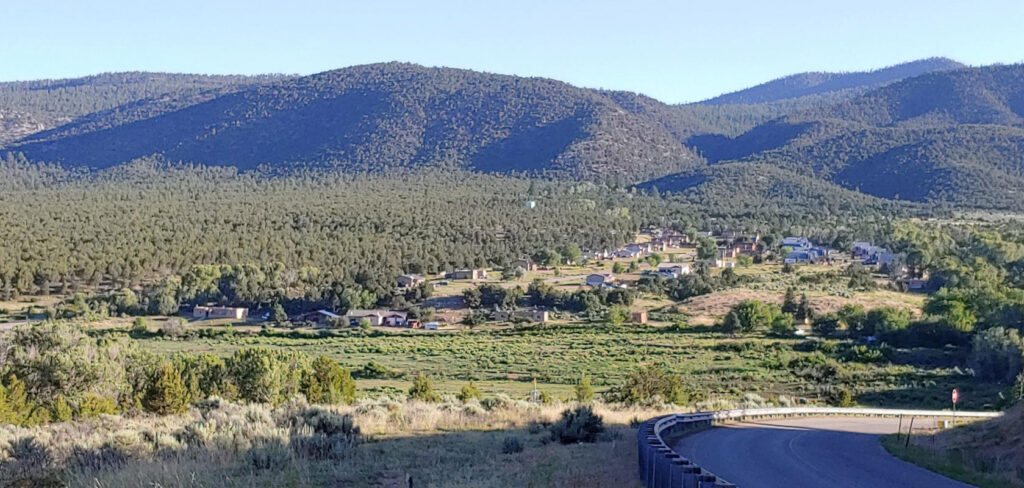From striking architecture to rich history, traditions, and art, pueblos have left a permanent mark on the land and the people of New Mexico. The Picuris Pueblo is no exception.
More than just a type of building, Pueblos are groups of people and the villages where those people have lived for hundreds of years — and still live today. While the Pueblos you see today have changed significantly since ancient times, they still maintain ancient customs alongside modern ways of living.
The Picuris Pueblo, located near Santa Fe, N.M., is just one example of the many Pueblo tribes that still exist as a bridge between the past and present of this beautiful land.
Read on to learn more about the unique history and culture of the Picuris Pueblo and what the pueblo looks like today.
What Is a Pueblo?
Before we get into the Picuris Pueblo specifically, let’s first establish what a pueblo is. You’re probably already familiar with the Spanish-Pueblo-style adobe structures built in and around the New Mexico area. But, while “pueblo” has become synonymous with a particular architectural style, that’s not the only meaning of the word.
Pueblo, the Spanish word for “village,” is also used to refer to specific tribes that are indigenous to what is now the Southwest United States. New Mexico is home to 19 Pueblo tribes, including the Picuris Pueblo, each of which is its own sovereign nation.
A pueblo, then, is both a tribe and a place. It’s a group of people, and it’s also the land and dwellings they call home. Though not all members of the Pueblo tribes still live in their ancestral homes, the land and culture of the Pueblo people are inextricably linked.
What Is the History of the Picuris Pueblo?
The Picuris Pueblo is located in what’s known as the “Hidden Valley” in northern New Mexico, 60 miles from Santa Fe. The Picuris tribe has lived in the beautiful Sangre de Cristo Mountains for centuries, dating back long before the arrival of Spanish explorers.
In roughly 1250 A.D., the Picuris people migrated from Pot Creek to the pueblo’s current location. Their proximity to Plains tribes gave them both a strong relationship with those tribes and a unique culture, distinctive from other Pueblo tribes.
Following two Pueblo revolts against the Spanish in 1680 and 1696, respectively, the Picuris people left the pueblo, and the majority never returned, reducing the population from several thousand to just a few hundred. What was once one of the largest Pueblo tribes is now one of the smallest.
What Is the Picuris Pueblo Like Today?
The name “Picuris” is said to have come from the Spanish colonizer Juan de Oñate, who called the pueblo “Pikuria,” or “those who paint.” Even today, the Picuris people are known for their art — especially pottery.
Visitors and residents alike can obtain a fishing license for the fishing pond, visit the Picuris Pueblo museum, and view the growing bison herd.

As is the case with many pueblos, visitors are welcome to come experience celebrations such as the annual San Lorenzo Feast Day on August 10. This feast day celebrates the 200-year-old mission church, San Lorenzo de Picuris, with dances, pole climbing, and a foot race.
However, it’s important to remember that most Pueblo celebrations are sacred events — and a visit to the Picuris Pueblo is a visit to the Picuris tribe’s home. Photography is not permitted at any time.
Past Meets Present
The Picuris Pueblo is both a historic village steeped in history and culture and a people living in the here and now. This unique heritage places the Picuris people at a crossroads of ancient customs and modern development.
At The Santa Fe Dispensary, we combine ancient wisdom with cutting-edge technology to bring you the best quality cannabis products. Follow us on Instagram to learn more about the deep history and culture behind our modern-day operations.
